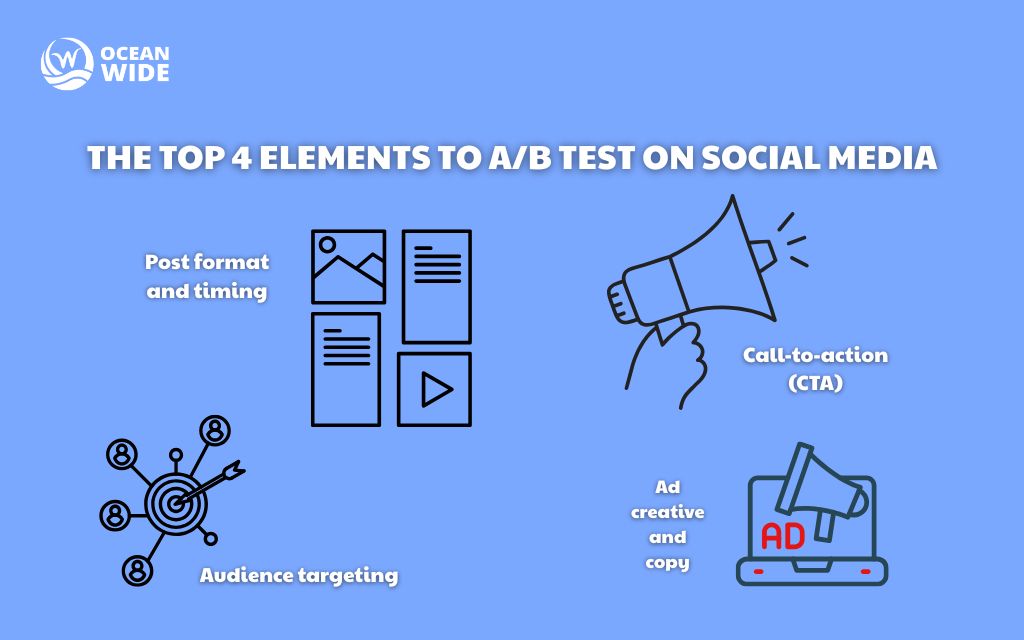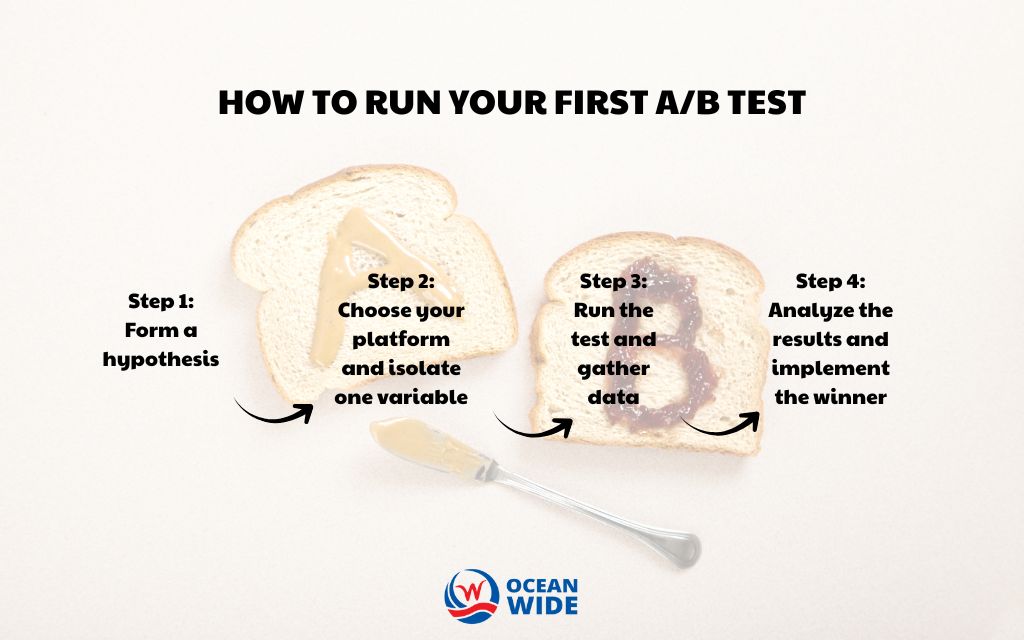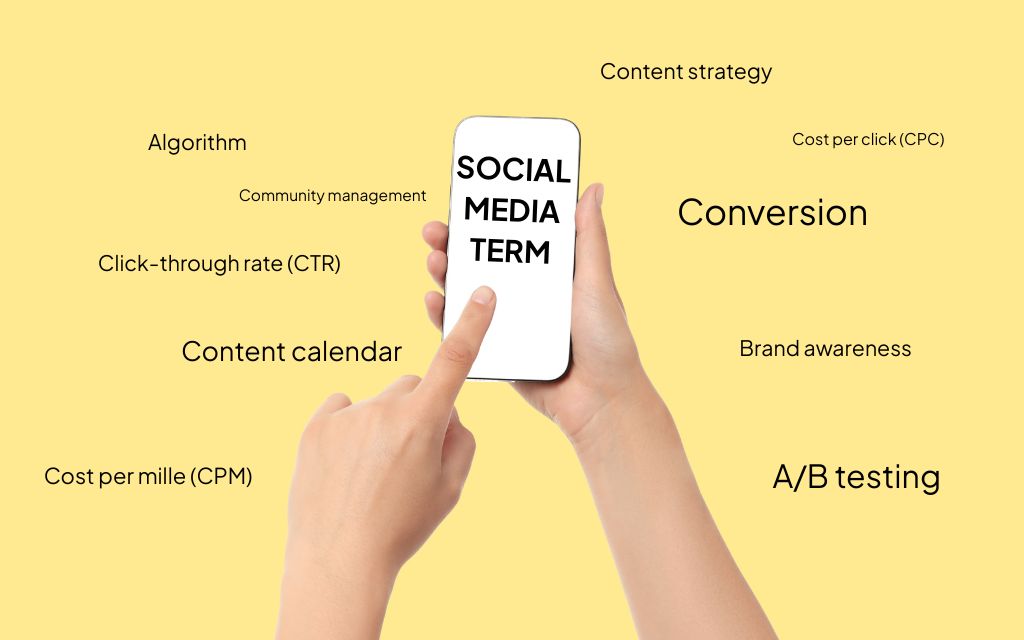Denver’s business landscape moves fast. Your competitors are already testing their social media content, learning what works, and leaving guessing games behind. A/B testing social media isn’t about luck or creative hunches. It’s about running controlled experiments that show you exactly which post drives more sales, which ad creative gets clicked, and which message turns browsers into buyers.
This guide walks you through what is a/b testing in social media, how to implement it for your Colorado business, and provides real examples you can replicate today. Whether you run a Cherry Creek boutique or a Boulder tech startup, these strategies work. Ready to stop wasting ad spend on content that doesn’t convert?
What is social media A/B testing? (And why it matters)
Social media A/B testing, also called split testing, compares two versions of your content to determine which performs better. You show version A (your control) to one segment of your audience and version B (your variation) to another similar segment. The version that achieves your goal wins.

This methodology traces back to early 20th-century agricultural experiments where researchers tested crop yields under different conditions. Tech companies like Google adapted it in the early 2000s to optimize user interfaces, proving small changes could drive significant behavioral shifts.
Here’s what makes ab testing social media powerful. Unlike surveys that ask people what they prefer, A/B testing measures what they actually do. Someone might tell you they love your product photos, but if your lifestyle imagery drives 40% more clicks, the data tells the truth. You isolate one variable, test it against a control, and get quantitative results that guide your next move.
For Denver businesses competing in crowded markets like craft brewing, outdoor retail, or professional services, this approach removes assumptions. You learn what your Front Range audience responds to, not what works for a generic national market.
The process delivers three core benefits. First, it improves your conversion rate by showing you the exact creative elements that drive action. Second, it reduces wasted ad spend by eliminating underperforming content before you scale it. Third, it builds institutional knowledge about your audience that compounds over time.
The top 4 elements to A/B test on social media
Your social media presence includes dozens of variables. Start with these four high-impact elements that directly influence your key performance indicators.

1. Ad creative and copy
Your images, videos, headlines, and primary text determine whether someone stops scrolling or keeps moving. A Denver home services company might test a photo of their team at work against a before-and-after transformation image. Both have merit. The test shows which your audience values more.
Your headline does heavy lifting. Test benefit-focused headlines against feature-focused ones. “Get 30% More Leads from Your Website” emphasizes the outcome. “Advanced SEO + Content Marketing Services” lists what you do. The first might outperform for small business owners focused on growth.
2. Call-to-action (CTA)
Your CTA tells people what to do next. Small changes create dramatic conversion differences. “Learn More” versus “Shop Now” versus “Get Started” each imply different levels of commitment and attract different buyer stages.
For service businesses, testing “Schedule a Free Consultation” against “Contact Us Today” reveals how your Denver audience prefers to engage. The first removes friction by emphasizing the no-cost nature. The second is direct and assumes they’re ready.
3. Audience targeting
Facebook Ads Manager and LinkedIn Campaign Manager let you test different audience segments to find your most profitable customers. Start with demographic splits. If you serve both 25-35 year olds and 45-55 year olds, test which group converts at a better rate.
Interest-based audience testing reveals unexpected opportunities. A Boulder wellness brand might test “yoga enthusiasts” against “marathon runners” to see which group responds better to their recovery products.
Geographic targeting matters for local Denver businesses. Test Denver proper against the broader Front Range. You might discover that customers in Aurora or Lakewood convert better than those in central Denver, changing where you focus your ad spend.
4. Post format and timing
Carousel ads let you show multiple products or tell a story across slides. Single image ads focus attention on one message. Reels bring motion and sound. Each format serves different goals. A Colorado ski resort testing Instagram Reels against static posts might find that Reels generate massive reach but static posts drive more website clicks to book trips.
Posting time affects who sees your content. Test morning posts (7-9 AM) against evening posts (6-8 PM). B2B companies targeting other Denver businesses often find midday posts (12-2 PM) perform well when decision makers are taking lunch breaks.
How to run your first A/B test: A 4-step guide
This framework simplifies the process into four clear actions that work whether you’re testing Facebook ads or LinkedIn posts.
Step 1: Form a hypothesis
Start with a specific question about what might improve your results. Strong hypotheses connect a change to an expected outcome based on logic or observation.
Good hypothesis: “Our Denver audience will engage more with images of local Colorado landscapes in our ads because our brand emphasizes regional authenticity, and we’ve noticed higher organic engagement on posts featuring mountain imagery.”
Weak hypothesis: “Maybe a different image will work better.”
Step 2: Choose your platform and isolate one variable
Facebook Ads Manager includes A/B testing built into the interface. The platform automatically splits traffic and calculates statistical significance for you. This makes it the easiest starting point for most Denver small businesses new to social media ab testing.
LinkedIn Campaign Manager offers similar split testing for B2B companies. Instagram testing happens through Meta Business Suite since Facebook owns Instagram.
The critical rule: change only one thing at a time. If you test a new headline and a new image simultaneously, you won’t know which drove the performance change. Isolating variables gives you clear answers.
Step 3: Run the test and gather data
A typical test needs at least 100 conversions per variation to reach statistical significance. For high-converting offers, this might take 3-4 days. For complex B2B services with longer sales cycles, you might need 2-3 weeks. Don’t end tests too early.
Let the algorithm do its work. Platforms like Meta optimize delivery as they learn which version performs better. Resist the urge to pause tests or make changes mid-stream.
Step 4: Analyze the results and implement the winner
Once your test completes, look at both the raw numbers and the statistical confidence. Most platforms tell you when a result is statistically significant, typically at 90-95% confidence.
Compare key performance indicators between versions. Which variation had lower cost per click? Which drove more conversions? Sometimes version B gets more clicks but version A converts those clicks at a higher rate. In that case, A wins because conversions matter more than clicks.
Implement the winner immediately and document your results. Build a simple spreadsheet tracking what you tested, which version won, and what you learned. Over time, these insights compound.

A/B testing social media examples for Denver businesses
Real examples make abstract concepts concrete. These scenarios show how Colorado businesses use split testing to solve specific challenges.
Example 1: A LoHi coffee shop tests ad imagery
A coffee shop in Lower Highland wants more foot traffic during weekday mornings. They run Instagram ads targeting nearby residents. Their question: does showing the product or the experience drive more store visits?
Version A shows a high-quality photo of their signature lavender latte. Version B shows customers laughing at a table by the window with morning light streaming in. Both ads use identical copy and a “Get Directions” CTA.
After seven days with a $200 budget, version B generated 43% more “Get Directions” clicks and 28% more actual store check-ins. The test revealed that LoHi residents valued the third place experience over product beauty alone.
Example 2: A Boulder tech startup tests LinkedIn headlines
A Boulder software company sells project management tools to small business owners. They run LinkedIn ads with two different headlines.
Version A: “Cloud-Based Project Management with Real-Time Collaboration, Automated Reporting, and Mobile Access.”
Version B: “Get Your Team on the Same Page and Finish Projects 30% Faster.”
After 10 days with a $500 budget, version B drove 67% more clicks and 52% more free trial signups. The company implemented the benefit-first approach across all their marketing, contributing to a 40% increase in quarterly customer acquisition.
Key metrics to track for social media A/B testing success
Different tests require different metrics. Focus on what drives growth for your Denver business.
| Metric | What It Measures | What Good Looks Like |
| Click-Through Rate (CTR) | Percentage who see your ad and click | 1-3% for cold audiences, 3-5%+ for warm |
| Cost Per Click (CPC) | How much you pay for each click | Lower is better, but factor in conversion |
| Conversion Rate | Percentage of clicks that complete your goal | 2-5% is common for lead generation |
| Cost Per Acquisition (CPA) | Total cost to acquire one customer | Should be lower than customer lifetime value |
| Return on Ad Spend (ROAS) | Revenue generated per dollar spent | 3:1 minimum, 5:1+ is strong |
For lead generation campaigns common among Denver service businesses, track cost per lead and lead quality. E-commerce businesses should focus on ROAS and conversion rate. You need to know not just who clicks, but who buys and how much they spend.
How The Ocean Wide optimizes social media campaigns for Denver businesses
Running tests takes time, technical knowledge, and ongoing attention. Most Denver business owners have better things to do than manage split tests and analyze conversion data. That’s where specialized expertise makes the difference.
We build testing frameworks specific to your business model and market position. A Cherry Creek retail shop needs different testing strategies than a Boulder SaaS company. We identify the variables that actually matter for your conversion goals and design experiments that produce actionable insights fast.
Our approach starts with understanding what’s already working. We audit your current social media performance to establish baseline metrics and identify improvement opportunities. We handle the technical setup, manage budget allocation, monitor performance daily, and provide regular reports that explain what we learned and what we’re implementing.
The goal is sustainable improvement that builds your competitive advantage. Every test creates institutional knowledge about what your Colorado audience responds to. Over months, this compounds into a marketing system that consistently outperforms competitors.
Ready to replace assumptions with data and turn your social media into a reliable customer acquisition channel? Contact The Ocean Wide today to discuss how a/b testing social media can transform your results.
FAQs about a/b testing social media
How much does it cost to A/B test on social media?
The cost depends entirely on your ad budget. Platforms like Facebook and Instagram include split testing features at no additional charge. You only pay for the ad spend needed to gather meaningful data, which can start from as little as $100-200 for a basic test. The Ocean Wide helps Denver businesses determine the right budget for reliable results based on their audience size and campaign goals.
How long should I run an A/B test?
Most tests need 4-7 days minimum to account for daily fluctuations in user behavior and gather sufficient data for statistical significance. Larger budgets and bigger audiences can reach conclusions faster. The platform will indicate when results are statistically significant, usually at 90-95% confidence. The Ocean Wide monitors your tests and determines optimal timing for each campaign.
What’s the difference between A/B testing and multivariate testing?
A/B testing compares two versions by changing a single element, like testing one headline against another. Multivariate testing changes multiple elements simultaneously to find the best combination. A/B testing is simpler, requires less traffic, and is recommended for beginners. The Ocean Wide implements both approaches based on your business size and testing maturity.
Can I A/B test organic (non-paid) social media posts?
Yes, though it’s less scientific than paid testing. You can post two content variations at similar times on different days and compare metrics. However, organic reach is unpredictable, making it harder to draw definitive conclusions. Paid A/B testing provides controlled, reliable data. The Ocean Wide can help you determine when organic testing makes sense and when paid testing delivers better insights for Colorado businesses.
What is a “statistically significant” result?
Statistical significance means your test result likely didn’t happen by random chance. Most platforms report this at 90-95% confidence, meaning there’s only a 5-10% probability the performance difference was luck. This gives you confidence that implementing the winner will actually improve your results. The Ocean Wide ensures all our testing reaches significance before making recommendations to our Denver clients.
Stop guessing and start growing
Effective a/b testing social media is the most reliable way to optimize your campaigns and turn your accounts into powerful conversion engines. By methodically testing your creative, copy, targeting, and timing, you replace assumptions with hard data. This ensures every dollar you spend works harder for your business.
For Denver businesses, this approach is especially powerful. Local market conditions, seasonal patterns, and regional culture create unique dynamics that generic national strategies miss. Testing reveals what works specifically for Colorado audiences, giving you an edge over competitors using templated approaches.
The businesses that win in Denver’s competitive market are the ones that learn faster than everyone else. A/B testing is how you accelerate that learning. Each test compounds the one before it, building a knowledge base about your audience that makes every campaign smarter.
If you’re ready to unlock your social media’s full potential with an expert a/b testing strategy, connect with The Ocean Wide. Our Denver-based team is here to build a data-driven plan that fits your business and delivers growth you can measure.
Contact us today for a free consultation. Let’s discuss how split testing can transform your social media from a cost center into your most reliable source of new customers.
- Address: 1007 S Federal Blvd, Denver, CO 80219, United States
- Email: [email protected]
- Call Us: (720) 334-0899


